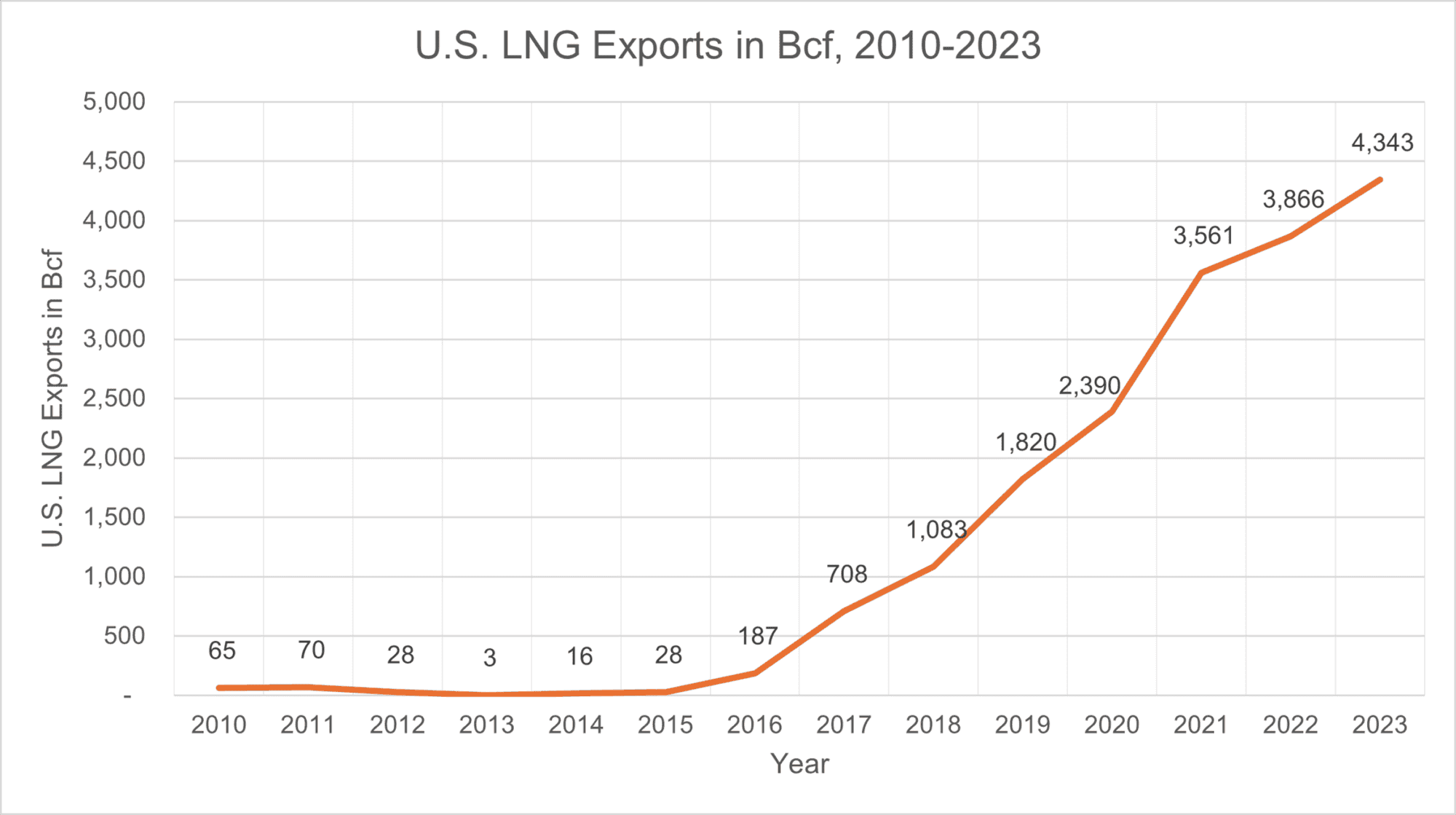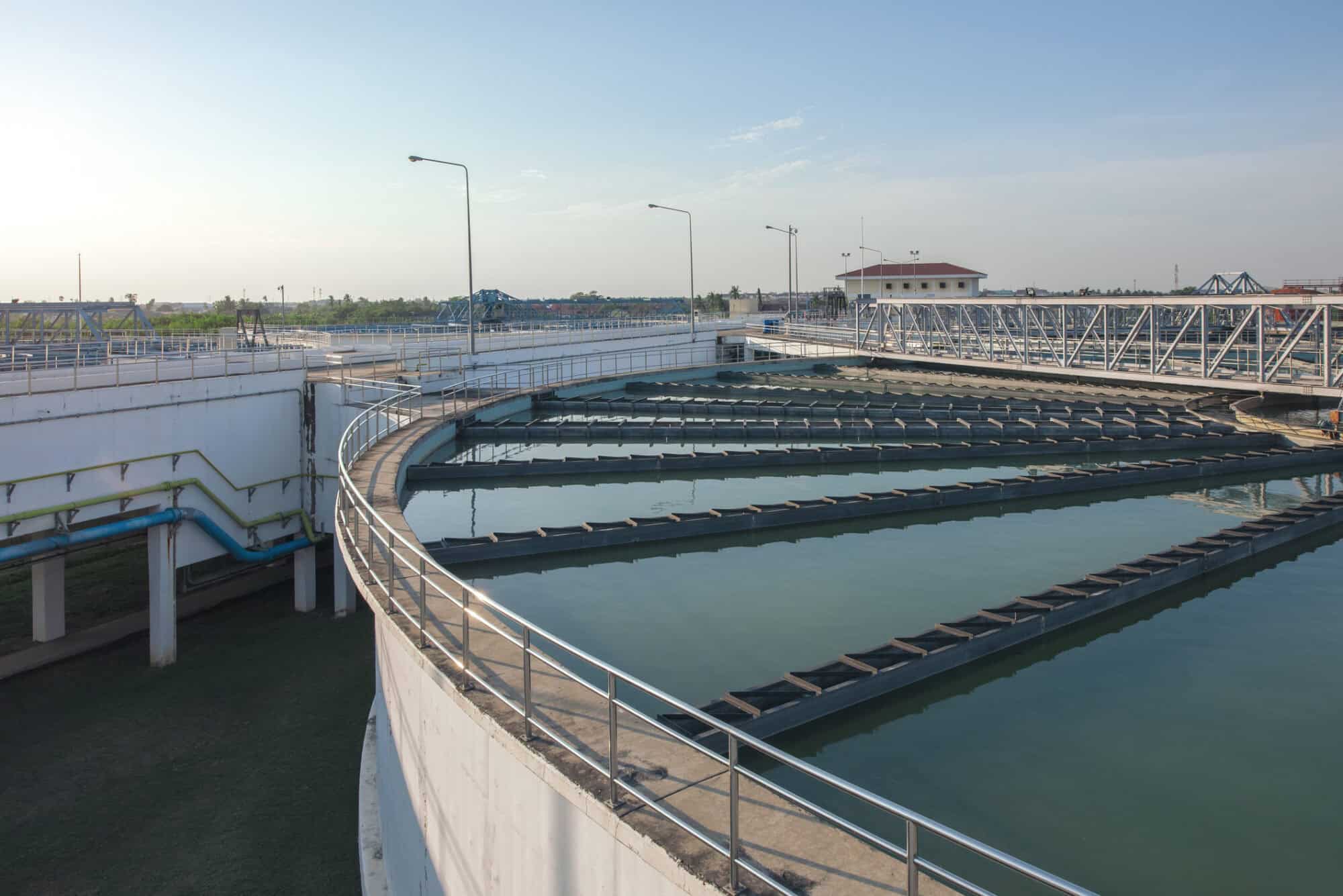NAM Welcomes House Report on AI

Manufacturers support the policy recommendations laid out in the House of Representatives’ newly released report on artificial intelligence, the NAM said Tuesday.
What’s going on: The Bipartisan House Task Force Report on Artificial Intelligence contains AI-related recommendations for implementation by Congress.
- Drafted by the House AI Task Force—12 Republicans and 12 Democrats—the 273-page document “highlights America’s leadership in its approach to responsible AI innovation while considering guardrails that may be appropriate to safeguard the nation against current and emerging threats,” the task force’s co-chairs, Reps. Jay Obernolte (R-CA) and Ted Lieu (D-CA), wrote in a letter to House Speaker Mike Johnson (R-LA) and House Minority Leader Hakeem Jeffries (D-NY) at the beginning of the report.
The details: The task force report includes many recommendations that the NAM supports, including the following:
- Promote innovation: “As the global leader in AI development and deployment, the United States is best positioned to responsibly enable the potential of this transformative technology for all. To maintain this leadership and enable the U.S. economy to harness the full benefits of AI, policymakers should continue to promote AI innovation.”
- Safeguard against harm: “A thoughtful, risk-based approach to AI governance can promote innovation rather than stifle it.”
- Plan for power needs: “Planning properly now for new power generation and transmission is critical for AI innovation and adoption.”
- Develop an AI-ready workforce: “Successful collaborations between educational institutions, government and industries should effectively align education and workforce development with market needs and emerging technologies.”
- Protect privacy: Congress should “[e]nsure privacy laws are generally applicable and technology-neutral.”
- Make compliance feasible: Lawmakers should ensure that AI regulatory compliance is not unduly burdensome for small businesses
- Increase cooperation: Bolster collaboration between the government, industry and academia to boost innovation and expand markets.
NAM alignment: In May, the NAM released “Working Smarter: How Manufacturers Are Using Artificial Intelligence,” its own report on AI’s deployment in the manufacturing sector and an accompanying list of suggested policy actions for Congress to take.
- The NAM briefed legislators on its report in September.
Next steps: The NAM will work closely with policymakers in Congress and the incoming administration to bolster AI innovation in manufacturing, based on shared policy goals.
Additionally, manufacturers will continue to call on Congress to pass federal data privacy legislation that “preempt[s] state privacy regulations [and] resolve[s] conflicting requirements in different states”—an important issue for the use of AI where the House report does not prescribe a policy solution.
Manufacturers Appreciate President Trump’s Focus on Curbing the Regulatory Onslaught
Washington, D.C. – Today, the National Association of Manufacturers, along with more than 100 manufacturing associations, sent a letter to President Donald Trump laying out a roadmap for regulatory actions across a wide range of agencies that would boost the manufacturing economy and put a stop to the regulatory onslaught that is costing manufacturers $350 billion each year.
Manufacturers have made the case that unbalanced, unworkable regulations severely impact our ability to grow and create jobs. Today’s letter lays out specific steps the new administration can take to reverse the trend of federal agency overreach—providing much-needed regulatory certainty to manufacturers and empowering the industry to continue to make the long-term investments that drive job creation, growth and economic competitiveness here in the United States.
The letter states, in part:
Dear President-elect Trump,
Right now, regulations are strangling our economy. Manufacturers are shouldering enormous regulatory compliance costs—nearly $350 billion annually, or 12% of our entire sector’s contribution to U.S. GDP. For smaller manufacturers with fewer than 50 employees, these costs can exceed $50,000 per employee each year. This means that a small manufacturer with just 20 employees pays $1 million per year to comply with federal regulations—rather than investing those funds in raises or new jobs.
The regulatory onslaught reached a fever pitch during the Biden administration. Prior to the election, the National Association of Manufacturers surveyed the industry and found a significant decline in optimism among manufacturers, with an unfavorable business climate, particularly taxes and regulations, cited as a primary business challenge by more than 60% of respondents.
You have the opportunity to tackle this challenge by addressing burdensome regulations that are stifling investment, making us less competitive in the world, limiting innovation and threatening the very jobs we are all working to create right here in America.
The letter highlights more than three dozen regulatory actions the Trump administration can take to support manufacturing growth, including the following:
- Liquefied Natural Gas Export Ban: On Day One of your administration, lift the pause on LNG exports through an updated national interest assessment.
- Permitting Reform: Appoint an official within your administration to help coordinate policies across the executive branch to ease the permitting burden. Specifically, your administration should start by prioritizing a reconsideration of the “NEPA Phase 2 Rule” and the current implementation of the permitting reform provisions of the Fiscal Responsibility Act.
- National Ambient Air Quality Standards for Particulate Matter and Ozone: Reconsider and relax the Biden administration’s NAAQS for PM2.5 rule and maintain both the primary and secondary standard for the NAAQS for ozone rule at 70 parts per billion.
- Power Plant Rules: Replace the Environmental Protection Agency’s rule for existing coal-fired and new natural gas–fired power plants with workable standards.
- Proxy Advisory Firms and the Proxy Process: Rescind Staff Legal Bulletin 14L and end the politicization of the proxy process. Additionally, enforce and preserve the 2020 proxy advisory firm rule while taking steps to build on its reforms with additional policies modeled on the Securities and Exchange Commission’s 2019 proposal.
To view the full letter and list of regulations, click here.
Background:
In 2023, the NAM, along with members of the NAM’s Council of Manufacturing Associations and Conference of State Manufacturers Associations, launched the Manufacturers for Sensible Regulations coalition to address the impact of the regulatory onslaught coming from federal agencies.
An NAM-commissioned analysis on the cost of federal regulations to the U.S. economy shows the following:
- The total cost of federal regulations exceeds $3 trillion each year, an amount equal to 11% of U.S. GDP.
- Federal regulations cost the manufacturing sector about $350 billion per year.
- Small manufacturers with fewer than 50 employees face disproportionate regulatory burdens, incurring costs of more than $50,000 per employee per year to comply with federal regulations.
- Since 2012, there has been a $465 billion increase in aggregate regulatory compliance costs.
-NAM-
The National Association of Manufacturers is the largest manufacturing association in the United States, representing small and large manufacturers in every industrial sector and in all 50 states. Manufacturing employs nearly 13 million men and women, contributes $2.91 trillion to the U.S. economy annually and accounts for 53% of private-sector research and development. The NAM is the powerful voice of the manufacturing community and the leading advocate for a policy agenda that helps manufacturers compete in the global economy and create jobs across the United States. For more information about the NAM or to follow us on Twitter and Facebook, please visit www.nam.org.
NAM: D.C. Circuit Should Preserve SEC Oversight of Proxy Firms

The U.S. Court of Appeals for the D.C. Circuit should overturn a lower court’s ruling that the Securities and Exchange Commission lacks the authority to regulate proxy advisory firms, the NAM said in a recently filed brief.
What’s going on: The Nov. 15 brief asking the appeals court to overturn a February ruling by the D.C. District Court is the latest in a years-long campaign by the NAM to ensure reasonable regulation of proxy firms. These powerful, unregulated entities often dictate how shareholders vote on proxy ballot proposals that come before public companies.
- “Since the passage of the Securities Exchange Act of 1934 in the wake of the Great Depression, the Securities and Exchange Commission has regulated proxy solicitation, so shareholders can confidently vote based on transparent and reliable information,” according to the NAM brief. “Accordingly, since the proxy voting advice industry emerged four decades ago, those firms have been subject to SEC regulation.”
- Institutional Shareholder Services, the largest and most influential proxy firm, “would rather not be regulated at all”—but “[t]he record overwhelmingly establishes that proxy firms ‘solicit’ proxies under any reasonable definition,” subjecting them to SEC oversight as required by the Exchange Act.
Why it’s important: Proxy firms wield enormous influence over both manufacturers and Main Street investors, the NAM said.
- “ISS and its main competitor, Glass Lewis, control 97% of the proxy advice market and together influence nearly 40% of the U.S. shareholder vote,” the NAM told the court in its brief.
- Further, proxy firms operate with undisclosed conflicts of interest, their reports can contain errors and misleading statements and their “robo-voting” services give them the authority to cast investors’ proxy votes with no review or input by the investors themselves.
NAM on the front lines: In July 2020, after years of NAM advocacy, the SEC finalized a rule instituting critical proxy firm reforms. ISS quickly brought a legal challenge, and the NAM intervened in the case to ensure a robust defense of the rule.
- Following the change in presidential administrations in 2021, in separate lawsuits the NAM successfully challenged the Biden SEC’s refusal to enforce the 2020 rule and its rescission of critical portions of the rule.
- After an unfavorable decision from the D.C. district court in the ISS challenge, the Biden SEC declined to pursue an appeal, effectively disclaiming its authority to regulate proxy firms. The NAM took the lead as intervenor-appellant in the case, so manufacturers are now the sole bulwark against proxy firms’ unchecked power. A victory in the D.C. Circuit for the NAM would make the proxy firms subject to the 2020 rule’s important reforms.
Former SEC officials agree: A group of former SEC commissioners and staff authored an amicus brief in support of the NAM’s position.
- The brief chronicles the commission’s 50-year history of affirming that proxy firms are engaged in solicitation. The officials make clear that “stripping the SEC of its long-standing and Congressionally conferred power to regulate the firms” would “seriously harm the investing public by decreasing fairness and honesty in the markets—exactly the opposite of what Congress was trying to accomplish in the Exchange Act.”
What’s next: ISS’s response to the NAM’s brief is due in the coming weeks, and the court likely will schedule oral argument for early 2025.
NAM: Clarify 30C Tax Credit Rulemaking

The “30C” tax credit has the potential to spur manufacturing investment, but the Internal Revenue Service and Treasury Department must first clarify some of their proposed rules regarding it, the NAM said this week.
What’s going on: In September, the IRS and Treasury Department jointly proposed regulations regarding Section 30C of the U.S. tax code’s Alternative Fuel Vehicle Refueling Property Tax Credit, which was changed and expanded by the Inflation Reduction Act of 2022.
- “A key purpose of the energy provisions of the IRA was to reduce greenhouse gas emissions and spur manufacturing investments in low emissions and renewable energy sectors,” NAM Vice President of Domestic Policy Chris Phalen told the IRS on Monday.
- “Manufacturers make vehicles that use alternative fueling stations, many of our members produce the components … that go into these stations and manufacturers will construct and operate these refueling properties. These companies require certainty and specificity to make final investment decisions.”
What must be done: To that end, the NAM told the agencies the following changes should be made to the proposed regulations for the 30C tax credit:
- Extend the allowed transition period for organizations to update “census tract designations to reflect population data in the years 2016–2020,” as the draft rulemaking mandates that those wishing to take advantage of the 30C credit “must place the property into service within a specific census tract designation.”
- Clarify whether the location of the refueling infrastructure “would need to be made available to the public to qualify for the 30C tax credit.”
- Provide tax credit “eligibility for certain property directly attributable to the operation of alternative fuel vehicle refueling property, such as electrical panels and conduit/wiring, and ask that the agency also consider related construction and other project costs for eligibility.”
NAM Sees Strength for Manufacturing as Washington Transitions

With a new administration and Congress on the horizon, the NAM is signaling confidence in its ability to secure wins for manufacturing in the United States, highlighting both recent achievements and policy priorities moving forward.
“The NAM has always focused on what’s best for manufacturing in America, and our track record speaks to that,” said NAM Executive Vice President Erin Streeter. “Our approach is consistent because we know what it takes to get results.”
What we’ve delivered: With post-partisan engagement, the NAM has achieved historic policy wins across both recent administrations, including:
- Tax reform: The NAM’s advocacy helped shape the 2017 tax cuts, driving billions in savings that manufacturers have reinvested in jobs, innovation and facility upgrades.
- Regulatory certainty: The NAM has played a pivotal role in streamlining regulations, reducing compliance costs under the Trump administration and working to slow regulatory expansion during the Biden years.
- United States-Mexico-Canada Agreement: The NAM was a key advocate for USMCA, safeguarding U.S. jobs by ensuring fairer competition and greater access to key markets.
- Energy advances: NAM-backed policies have supported growth in domestic energy production, creating a more stable energy market.
- Infrastructure and CHIPS Act: The NAM was instrumental in securing the historic Bipartisan Infrastructure Law and the CHIPS and Science Act, both critical for modernizing the economy, bolstering national security and ensuring a reliable semiconductor supply.
“These wins demonstrate what we bring to the table,” Streeter said. “By staying focused on manufacturing’s priorities, we can partner effectively with the new administration and Congress to create and protect jobs and strengthen communities.”
Looking ahead: The NAM’s focus on core issues remains critical for keeping the sector competitive and resilient, Streeter continued. These issues include:
- Securing tax reform: The NAM’s “Manufacturing Wins” campaign aims to lock in key 2017 tax provisions that manufacturers rely on for stability and growth. “Tax reform has been a game-changer,” said Streeter. “Protecting that progress means more jobs and manufacturing-led growth across the country.”
- Regulatory certainty: The NAM is advocating for balanced regulations that support competitiveness. “Manufacturers thrive with clear, fair rules,” Streeter noted. “We’re making sure Washington understands the importance of regulatory stability—and the danger of excessive regulation.”
- Energy security: The NAM is working to secure reliable, affordable energy while fostering innovation in sustainability. “Energy security and grid reliability are top of mind for every manufacturer,” Streeter added. “We’re ensuring manufacturers can continue to innovate, grow and drive America forward.”
Bottom line: The NAM remains focused on advocating for policies that strengthen U.S. manufacturing. “Our success is built on trust and influence,” Streeter said. “Our members know the NAM is a constant force, with the relationships and expertise to deliver, regardless of political changes.”
In related news, President-elect Trump has named campaign manager Susie Wiles as White House chief of staff (Reuters, subscription), a choice NAM President and CEO Jay Timmons called “a powerful move to bring bold, results-driven leadership to the White House from day one.”
NAM to Commerce: Security, Competitiveness Go Together

Manufacturers agree that the U.S. should address the potential national security and privacy risks associated with connected vehicles—those that use technologies to communicate with each other and other systems. But “[n]ational security, privacy and economic strength can be pursued in conjunction with one another,” the NAM told the Commerce Department this week.
What’s going on: In September, the Commerce Department’s Bureau of Industry and Security proposed rules to ban connected vehicles that integrate information and communications technology from China and Russia (POLITICO).
- While manufacturers support safeguarding efforts, “[o]ur competitiveness also requires national security challenges to be addressed through proportionate actions … [that] do not unduly hinder” American manufacturing, NAM Managing Vice President of Policy Chris Netram told BIS on Monday.
- The rule’s software prohibitions would go into effect for vehicles model year 2027, while the hardware regulations would take effect for vehicles model year 2030. The NAM is asking BIS to discuss with stakeholders whether they need more time to comply, given the length of the automotive design and development cycles.
What it could do: If finalized, the rule would require automotive manufacturers using Chinese or Russian technology to find new suppliers.
The problem: “Automotive supply chains are highly complex, with [information and communications technology and services] embedded in the products of many sub-suppliers who sell to automotive original equipment manufacturers,” Netram continued.
- What’s more, information and communications technology and services “are foundational technologies across the manufacturing ecosystem and wider economy. As such, the rule in its current form could generate unintended consequences both within the automotive industry and across the broader ICTS supply chain, violating the department’s obligation to engage in reasoned decision making and avoid arbitrary and capricious rulemaking.”
What should happen: The NAM urged BIS to take several actions, including the following:
- Clearer definitions: Certain wording in the rule should be rephrased for clarity, including “Person Owned by, Controlled by or Subject to the Jurisdiction or Direction of a Foreign Adversary” and “Connected Vehicle.”
- Covered software: “[T]he NAM urges BIS to consider revising the proposed rule to ensure it does not require visibility into and control over the software code provided by an OEM’s tier 3 suppliers and beyond.”
- Specific authorizations: “[T]he NAM recommends that BIS issue clear guidance about what criteria the Office of Information and Communications Technology would use to review and approve the risk assessments and the measures proposed by the applicant to mitigate the risks.”
- Attestations of compliance: Allow companies “to attest to their compliance” rather than “document and demonstrate compliance” to safeguard trade secrets.
The final say: With the NAM’s recommended changes, the BIS’s draft rulemaking “will support national security and privacy while ensuring that a vibrant manufacturing industry can continue to innovate and power growth in America for years to come,” Netram concluded.
Manufacturer Sentiment Declines

Manufacturer sentiment fell in the third quarter of this year, according to the NAM’s Q3 2024 Manufacturers’ Outlook Survey, out Wednesday.
What’s going on: Results of the survey, which was conducted Sept. 5–20, reflect “preelection uncertainty,” NAM President and CEO Jay Timmons said—but also larger economic concerns.
- “The good news is that there is something we can do about it,” said Timmons. “We will work with lawmakers from both parties to halt the looming tax increases in 2025; address the risk of higher tariffs; restore balance to regulations; achieve permitting and energy security; and ease labor shortages and supply chain disruptions.”
Key findings: Notable data points from the survey include the following:
- Some 62.9% of respondents reported feeling either somewhat or very positive about their business’s outlook, a decline from 71.9% in Q2.
- A weaker domestic economy was the top business challenge for those surveyed, with 68.4% of respondents citing it.
- Nearly nine out of 10 manufacturers surveyed agreed that Congress should act before the end of 2025 to prevent scheduled tax increases on manufacturers.
- The overwhelming majority—92.3%—said the corporate tax rate should remain at or below 21%, with more than 71% saying a higher rate would have a negative impact on their businesses.
- More than 72% said they support congressional action to lower health care costs through the reform of pharmacy benefit managers.
The last word: “When policymakers take action to create a more competitive business climate for manufacturers, we can sustain America’s manufacturing resurgence—and strengthen our can-do spirit,” Timmons said.
- “This administration and Congress—and the next administration and Congress—should take this to heart, put aside politics, personality and process and focus on the right policies to strengthen the foundation of the American economy.”
NAM: Biden’s LNG Ban Threatens 900,000 Jobs

The liquefied natural gas export industry has turned the U.S. into a powerhouse of cleaner energy, benefiting its trading partners around the world. The Biden administration’s ongoing ban on new LNG export licenses, however, is throttling an industry that could produce many more billions in revenue and a startling 900,000 jobs by 2044.
The data: A new study from the NAM and PwC shows that the U.S. LNG revolution could extend its upward climb, as shown on the graph above. Today, the industry is a huge source of jobs and profit:
- U.S. LNG exports support 222,450 jobs, resulting in $23.2 billion in labor income.
- The LNG industry contributes $43.8 billion to U.S. GDP.
- And lastly, federal, state and local governments receive $11.0 billion in tax and royalty revenues, thanks to U.S. LNG exports.
But that pales in comparison to the industry’s potential over the next two decades. The study projects the likely growth of the industry through 2044, showing all that is at stake if the ban remains in place until then:
- Between 515,960 and 901,250 jobs, resulting in $59.0 billion to $103.9 billion in labor income, would be at risk.
- The ban would also stifle between $122.5 billion and $215.7 billion in contributions to U.S. GDP during the same period.
- Between $26.9 billion and $47.7 billion in tax and royalty revenues meant to benefit communities across the United States would also be at risk in 2044.
Public opinion: The American public is squarely behind the LNG export industry, showing overwhelming approval in an NAM poll taken in March.
- Eighty-seven percent of respondents agreed the U.S. should continue to export natural gas.
- Seventy-six percent of respondents agreed with building more energy infrastructure, such as port terminals.
The last word: “With LNG exports, we do not have to choose between what’s good for the economy and good for the planet. Today’s research shows the massive opportunity America has when we unleash our economic and energy potential,” said NAM President and CEO Jay Timmons.
- “Building LNG export facilities and expanding natural gas production are not just good for our industry—they also cut emissions and help power manufacturing around the world.”
NAM Emphasizes USMCA, Protecting Investors in Mexico Meetings

In high-level meetings with government, manufacturing and trade group leaders held in Mexico last week, the NAM hammered home a key message: For North American manufacturing to remain globally competitive, Mexico must protect investor holdings in the country.
What’s going on: During a jam-packed three-day visit to Mexico City, NAM President and CEO Jay Timmons and an NAM contingent met with top officials in the new Sheinbaum administration, as well as leadership at multiple agencies and associations.
- These included newly appointed Deputy Trade Minister Luis Rosendo Gutiérrez, the Business Coordinating Council (CCE), the Confederation of Industrial Chambers of Mexico (CONCAMIN), the Mexico Business Council (CMN), the National Council of the Export Manufacturing Industry (INDEX) and others.
What they said: The NAM’s main message at each gathering was the same: Companies investing in Mexico need assurance that their portfolios will be protected regardless of the fate of proposed judicial reforms in the country.
- The NAM also underscored the importance of the U.S.–Mexico–Canada Agreement, which is due for review in 2026, and the necessity of ensuring that the deal is upheld for all three parties.
- If its terms are respected, USMCA could help North American manufacturing outcompete China.
On China: This week, just days after his office’s meeting with the NAM, Gutiérrez announced that the Sheinbaum administration will seek U.S. manufacturers’ help to reshore—mainly from China—the production of some critical technologies (The Wall Street Journal, subscription).
- “We want to focus on supporting our domestic supply chains,” he told the Journal, adding that talks with U.S. companies are still in the informal stage.
The NAM says: “Manufacturing is at the heart of the USMCA,” said NAM Vice President of International Policy Andrea Durkin, who was part of the NAM group on the ground in Mexico. “The NAM intends to work to ensure that the agreement strengthens the competitiveness of manufacturers.”
NAM, Allies Urge Court to Vacate PFAS Rule

The EPA’s final rule setting national drinking water standards for PFAS should be vacated in its entirety, the NAM and two allies said in an opening brief filed in federal court Monday.
What’s going on: The NAM, the American Chemistry Council and U.S. chemical company Chemours asked the U.S. Court of Appeals for the D.C. Circuit to overturn the EPA’s rule, announced in April, which requires that municipal water systems nationwide remove six types of per- and polyfluoroalkyl substances from drinking water. Trade groups representing the water systems have also sued to overturn the rule.
The grounds: The rule is unlawful and must be set aside for the following reasons:
- The EPA used a deeply flawed cost-benefit analysis to justify the rule.
- The EPA conducted a woefully incomplete feasibility analysis that ignores whether the technology and facilities necessary for compliance actually exist.
- Critical parts of the rule exceed the agency’s statutory authority under the Safe Drinking Water Act and flout the act’s express procedural requirements.
- The EPA failed to consider reasonable alternatives or respond meaningfully to public comments that undercut its judgment.
- The agency “lacked sufficient data to regulate” HFPO-DA, one of the PFAS chemicals that falls under the rule.
Why it’s important: PFAS “are substances at the center of modern innovation and sustain many common technologies including semiconductors, telecommunications, defense systems, life-saving therapeutics and renewable energy sources,” according to the brief.
- The NAM and its co-petitioners “support rational regulation of PFAS that allows manufacturers to continue supporting critical industries, while developing new chemistries and minimizing any potential environmental impacts. But that requires a measured and evidence-based approach that the [r]ule lacks.”
What’s next: Briefing in this case will continue through the spring, with oral argument to follow and a decision from the D.C. Circuit expected in late 2025.
